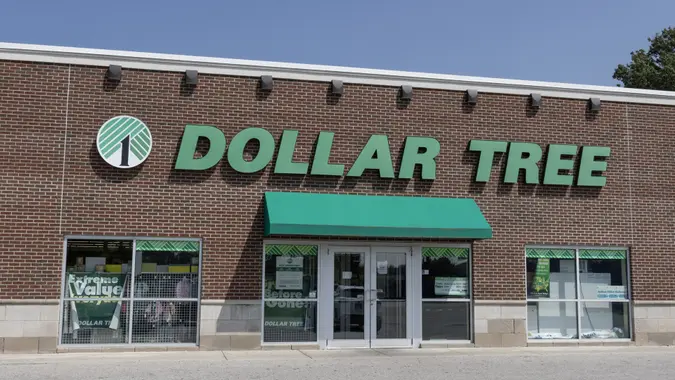The Hidden Price Hikes: Why You Need to Check How Much Your Streaming Services Are Really Costing You Now

Commitment to Our Readers
GOBankingRates' editorial team is committed to bringing you unbiased reviews and information. We use data-driven methodologies to evaluate financial products and services - our reviews and ratings are not influenced by advertisers. You can read more about our editorial guidelines and our products and services review methodology.

20 Years
Helping You Live Richer

Reviewed
by Experts

Trusted by
Millions of Readers
When users circumvented cable and started getting into streaming during the early noughties, the world was at the cusp of a digital revolution.
Increased access to the internet, coupled with reduced tolerance for advertisements and irrelevant media, played a significant role in consumer media consumption activities. With so many options, low prices, and no ads, migrating to streaming platforms made more financial sense.
Nowadays, if you use multiple streaming platforms, your monthly or annual bill is close — and sometimes higher — than the cost of cable TV. In fact, the average American spends up to $1,000 on subscriptions every year.
Streaming Platforms: How It Started
Most major streaming services have noticeably increased their prices since their launch. The culprit? Streamflation: a byproduct of inflation affecting every segment of the economy, triggering price hikes that are increasing as much as 25% per year, according to some analysts.
One of the most prominent examples is Netflix, initially a DVD rental platform in 1997 that struggled during its launch phase. By 2007, Netflix offered $8.99 plans with unlimited streaming options and lower-cost options for users with limited streaming time.
Another example is HBO, known today as Max, which started offering streaming options in 2015. Although its starting price was $14.99 monthly, users enjoyed premier shows and media they could not find elsewhere.
Disney+ Started its ad-free streaming service at $6.99, and Amazon Prime users got Prime Video at no extra cost when opting for the company’s Prime membership option.
Current Costs and Projected Price Hikes
Today’s prices for streaming services continue to inch to unprecedented highs with no end in sight. Moreover, these services are cracking down on password sharing, obliging consumers to pay extra if multiple people use the same account.
Netflix
- Standard subscription with ads: $6.99 / month
- Standard, ad-free subscription: $15.49 / month
- Premium subscription: $22.99 / month
Standard ad-free and premium subscriptions also include an option to add extra member slots for $7.99 a month.
Max and Bundles
Max offers individual and bundled subscriptions for monthly or annual plans.
- Standard subscription with ads: $9.99 / month or $99.99 / year
- Standard, ad-free subscription: $16.99 / month or $169.99 / year
- Ultimate ad-free subscription: $20.00 / month or $209.99 / year
- Disney+, Hulu, Max Bundle with ads: $16.99 / month
- Disney+, Hulu, Max Bundle with no ads: $29.99 / month
Disney+ and Bundles
Disney+ offers standalone subscriptions and bundles with Max for monthly or annual plans.
- Basic Disney+ subscription with ads: $7.99 / month
- Premium Disney+ ad-free subscription: $13.99 / month or $139.99 / year
- Bundle Duo Basic with ads (Hulu + Disney+): $9.99 / month
- Bundle Duo Premium without ads (Hulu + Disney+): $19.99 / month
- Bundle Trio Basic with ads (Hulu + ESPN + Disney+): $14.99 / month
- Bundle Trio Premium no ads (Hulu + ESPN + Disney+): $24.99 / month
Amazon
While Amazon isn’t strictly a subscription service, it offers Prime Video as a part of your Prime membership or a Prime Video Membership with and without ads.
- Amazon Prime Membership: $14.99 / month or $139.00 / year
- Prime Video Membership with ads: $8.99 / month
- Prime Video Membership without ads: an extra $2.99 / month
Managing Your Subscriptions
As Warren Buffet famously said, price is what you pay, value is what you get. If you’re happy with the quality and offerings of your plan, that’s one thing. But if you can’t justify the increases and barely use these services, reconsidering what you are willing to pay for helps cut your costs over time.
One way to keep track of what you’re spending on monthly subscriptions is using a subscription tracker. These are apps that help keep everything you pay for in one place. As you set them up, you can see what’s helping — and hindering — your monthly balance and remove subscriptions you no longer need.
Wrapping Up
Price hikes to subscription services won’t go away anytime soon. With more operational costs and the general state of the economy, these price hikes mean more spending for consumers as companies toe the line between reasonable and over the top.
If you are paying more for subscription services than you initially intended, it’s wise to manage them to keep track of price hikes. Knowing what you are spending and what you can forgo when you no longer use a service or can’t justify the cost over the value you get goes a long way in keeping your finances in check.
 Written by
Written by  Edited by
Edited by 

























